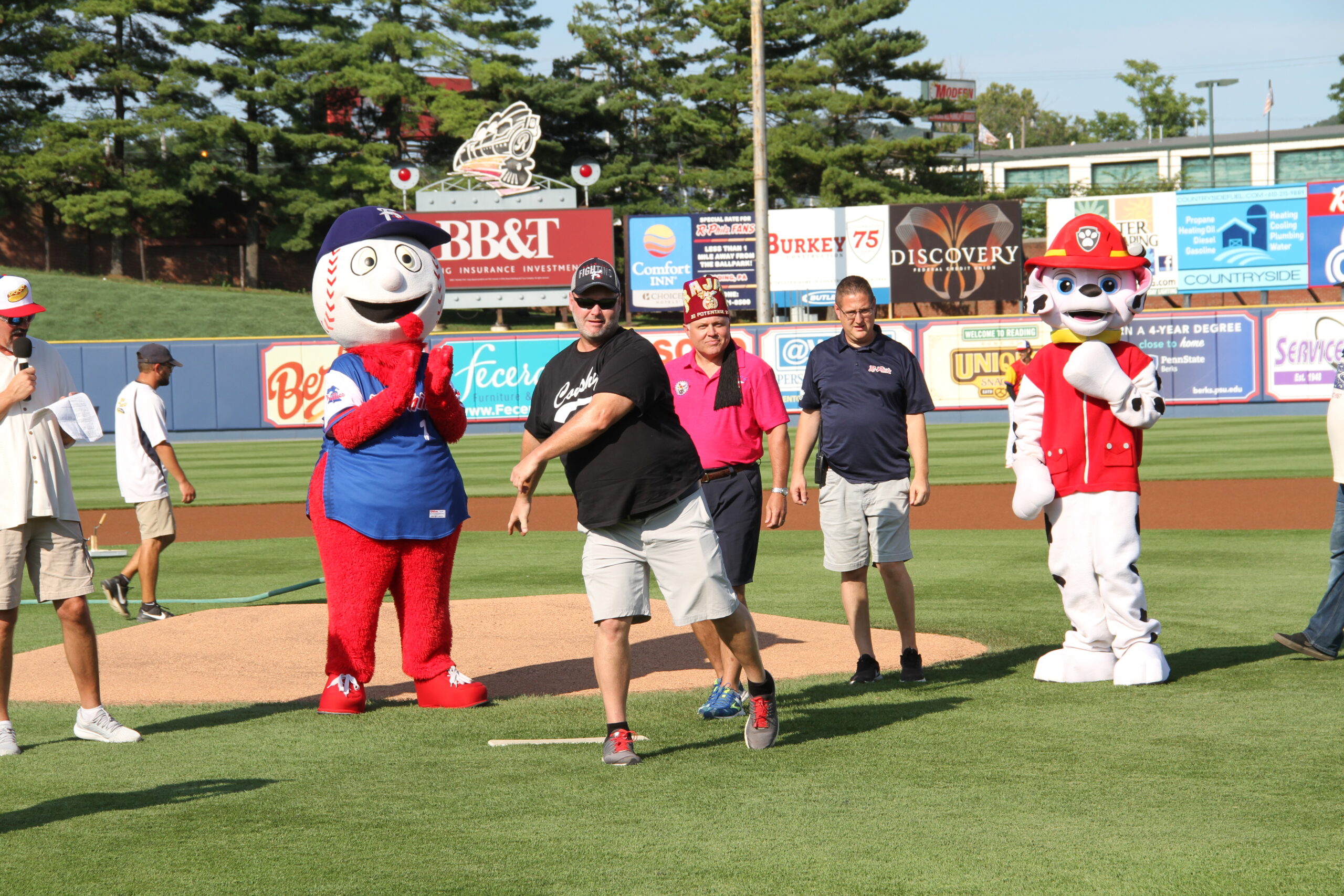
Conshohocken Rocked Reading and the R-Phils Yesterday
August 16, 2021
Through Your Eyes – A Childrens Book by Jena Foley
August 25, 2021History of a House – 338 E. 8th Ave. (more about the residents that lived there and over 100 years of fire history in and around the borough)
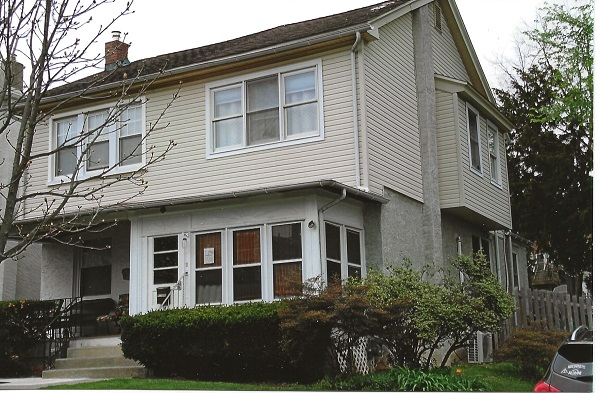
338 East Eighth Avenue
John “Chick” McCarter
Thomas “Chick” McCarter
Lifetime Conshohocken Residents
By Jack Coll
8/17/2021
Editor’s Note: (This is one in a series of short articles on random houses throughout the borough of Conshohocken, enjoy)
Houses up-and-down the avenues and streets of Conshohocken are, well, today, just houses, but back in the early part of last century, say a hundred years ago many of these houses provided needed services to the community. Many of them were corner stores or mid-block stores, the living rooms of some of these houses doubled as pool rooms, barber shops, cigar stores, candy stores and doctors’ offices. Also some of the town’s most prominent men and women lived in these houses. I thought it might be fun, and interesting to point out of few of these houses, that today are occupied by residents who I’m sure had no idea that their house was at one time something more than just a house, or knowing that a former resident of the house was one of the boroughs most prominent residents.
I must confess that this story isn’t so much about a house or houses as it is about a father and son who both spent a lifetime living in and serving Conshohocken. So let me explain, this story started with a file I have on Thomas “Chick” McCarter who was a fireman with the Washington Fire Company of Conshohocken for more than six decades, his son John “Chick” McCarter was also a fireman with the Washies for more than six decades. Thomas was a Conshohocken Councilman for 16 years and in 1952 was interviewed by the Conshohocken Recorder. He was asked about the worst fire he had ever seen and been a part of, a little more than thirty years later in 1983, not knowing anything about Thomas’s interview at the time I asked his son John about the worst fire he ever fought in his sixty years as a fireman. Both answers were extremely interesting. Thomas had been a firefighter since 1894, John was a fireman up until his death in 1989, the father and son duo covered nearly a consecutive century in the firehouse while serving a combined 129 years as firefighters.
So you can see why I thought I would point out where Thomas lived and write his story, but I had one little problem, his house once located at 246 East Fifth Avenue was demolished in the late 1970’s and a new more modern looking house was built on the site, so I didn’t want to highlight a house that he really didn’t live in. BUT WAIT, in Thomas’s obituary it stated that his residence was located at 246 East Eighth Avenue, so I drove down to the 200 block of East Eighth Avenue looking for 246 only to find that the block ends at 244. That would be the corner store known back in the day as “Mary Cherry’s,” There is no 246 East Eighth Avenue. So I’m guessing that the 246 East Fifth Avenue was the correct address.

So to conform to this column’s name sake, “HISTORY OF A HOUSE,” I chose to highlight John “Chick” McCarter’s long time residence at 338 East Eighth Avenue, now I know that address is good because I spent many days and nights at Chicks house at 338.
During the 1920’s and 1930’s there was a house building boom in Conshohocken especially on the upper avenues, East Eight Avenue was part of that building boom. Most of the houses along that portion of East Eight Avenue were built right around 1930 and most of them are two stories, Craftsman Vernacular style houses, as was Chick’s at 338.
Now that we have the background let’s start with Thomas “Chick” McCarter, Thomas was born in Norristown in 1869 where he lived for the first six years of his life before moving to Conshohocken where he lived the rest of his life.
Thomas attended Conshohocken schools and was later employed at Alan Wood Steel as a puddle at the Schuylkill Iron Works located along Washington Street. He later had a hauling business before opening up a confectionery store at Hector and Apple Streets.
In 1932, just as prohibition was being lifted and the depression was easing-up Thomas was elected as a Borough Councilman in the Third Ward where he served four consecutive terms serving until 1948. During his sixteen years as a councilman Thomas was instrumental in moving the borough forward.
In the winter of 1952 Thomas was the oldest living member of the Washington Fire Company when he gave an interview to a member of the Conshohocken Recorder Newspaper. The article stated that Thomas was at the firehouse with two other 50 year members including William H. (“Bill”) Murray, a prominent barber for many years and was the borough tax collector for a number of years and Clifford (“Cliff”) Campbell who was a former Conshohocken Police Officer who years earlier had been a partner with fellow officer Chick Lucas when he was murdered by Black Mike.
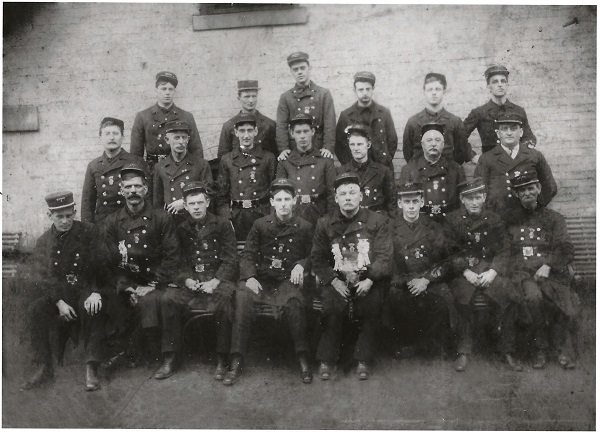
So the question from the reporter was, “What was the worst fire that you had ever been involved with?” “What was the worst fire we ever had?” The white-haired long-time fireman and former Town Councilman repeated. “The worst fire I ever remember was the old Gulph Brewery on Balligomingo Road,” Thomas said, his blue eyes were dimmed by the years, lighting up with memories of a long-ago dramatic day. “I was Chief Director of the fire company at the time.” The brewery was located at the intersection of Balligomingo Road and Jones Street. An outbuilding still stands and serves as a private residence today.
The fire happened on September 8, 1898. “I’ll never forget that day if I live to be a hundred,” Thomas said. Washies Firemen were called out at 11:00 in the morning. There was no trouble with water, as the firemen were able to use the water from the Gulph Creek. Thomas noted that the fire was burning really bad when the fireman reached its location, the Washington Fire Company was the only fire company in town. The George Clay Fire Company wasn’t formed until a year later, in 1899, Plymouth Fire Company, Spring Mill Fire Company, King of Prussia Fire Company were all formed later so the members of the Washies were on their own.
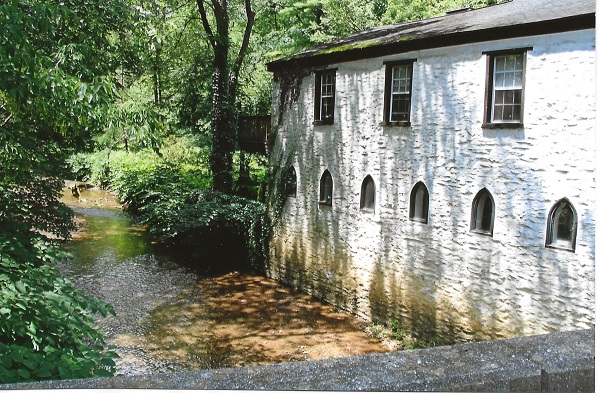
The Washies firefighters worked on the fire for about eight hours before retiring back to the firehouse. In the Recorder interview Thomas noted how tired they were. At 2:00 a.m. the next morning the firemen were called back to the scene for a second round. Thomas noted that it was the first time they used the new nickel plated combination chemical and hose engine. At the time of the 1898 blaze the fire company had a horse drawn new nickel-plated combination chemical and hose engine. Miles Stemple was the only fireman to ever hook up the horses and drive the wagon. Back in those days horses drew only the engines. The hose-carriage was pulled by hand, two firemen steered it and about fifteen men usually pulled it.
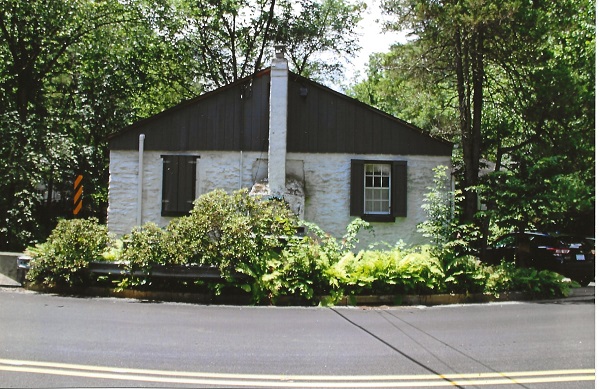
As the firemen started out at 2:00 a.m. pulling the hose wagon they got as far as the corner at Hector and Fayette Streets when a number of the firemen started balking, thinking about the long trip over the bridge and up Balligomingo Road. The fact that there was a big strong horse in the firehouse doing nothing, because there was no one there to drive the engine, “if that engine could be used we wouldn’t have to pull that wagon all the way to West Conshohocken,” noted Bill Murray. One of the firemen pulling the wagon was Gus Summers who was the president of the company at that time and instructed Murray to hook up the horse and drive the wagon which he did.
The site of the Gulph Brewing Company was originally occupied by the Tinkler Textile Mill before it burned to the ground about 1882. When the brewing company was constructed it was known as the Conshohocken Brewing Company
In the late 1890’s breweries became very popular in and around the Philadelphia area. The Brewerytown section in North Philadelphia sported more than two dozen breweries along the Schuylkill River employing thousands of neighborhood residents. At its peak, 700 breweries operated across the Philadelphia region, unfortunately, with the collapse of local industry later in the 20th century with the implementation of Prohibition in the United States and beer production moving primarily to the Midwest, every single brewer in Philadelphia had vanished by 1987.
The brewery industry has slowly returned to the Philadelphia area but nowhere near what it was back in the day. Ironically, there are currently no operating breweries in Brewerytown.
The Gulf Brewery Company that Thomas McCarter was referring to as the worst fire he ever attended was established in January 1892. John C. Griffith, William Haywood and John Stemple had submitted an application for the incorporation of the Gulf Brewing Company in December of 1891. The Charter was signed for the Commonwealth by A. L. Tilden and recorded on the first of March in 1892. Other shareholders at that time besides Griffith, Haywood and Stemple also included Henry Tracy, Charles Johnson and Oscar Knecht.
According to author Ed Dybicz, an old friend of mine, he noted in an article he authored nearly a half a century ago that the Gulph Brewing Company produced a fine product that soon became known throughout the eastern United States. In fact, its distinctive taste was so noted by so many taverns and inns that they advertised the Gulf Brewing Company name alongside its own signs.
Another feature was that farmers of Upper Merion and vicinity supplied the grain for the brewery. This also became a respected business trademark but many felt that the success of the brewery was the sparkling, clear water of the Gulph Creek and the lime tempered grain of Upper Merion that produced the fine brew.
When the stockholders applied for a charter they purchased 21 acres of ground along the Gulph Creek for $45,000.00, which included a cold storage facility and an artificial ice plant.
The brewery never reopened following the devastating fire of 1898. However John Griffith and Berry DeHaven restored a couple of the burned out buildings and converted them into an ice manufacturing plant. Ice manufacturing plants before the turn of last century were big money businesses.
In the 1940’s the stable at Balligomingo Road and the bridge spanning the Gulph Creek at the end of Jones Road was purchased by Paul M. McVicar. He converted it into a home which he occupied with his family for a number of years. The former stable/ice-house still stands today on the borderline of West Conshohocken and Upper Merion Township along the Gulph Creek.
During the same time the Gulph Brewing Company was in operation Conshohocken also had an operating brewery within the borough limits located on the corner of Hector and Jones Street called “Crystal Spring Brewing Company.” In the early 1890’s the Gulph Brewing Company and Crystal Spring Brewery Company were two of only three breweries located in Montgomery County.
Crystal Spring Brewery was built in 1893 and called “Conshohocken Brewing Company” at the time.
The brewery was opened by Frank X. Rieger in 1893 and operated until 1895. In 1895, Louis Rieger took control of the brewery until 1896. In 1896, Albert Loebie took over operations of the brewery until it closed in 1902. From 1897 to 1898, the brewery operated as the Conshohocken Brewing Company. In 1900, the brewery operated as the Crystal Springs Brewing Company until it closed in 1902. The former brewery building is still located at Hector and Jones Street.
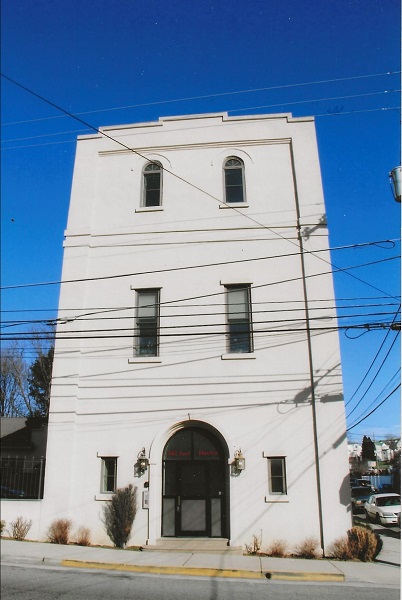
The building was slated to be razed in the early 1920’s but was saved by the Holy Trinity Church. The Church of The Holy Trinity Parish of Polish residents purchased the building and laid out $18,000 for improvements. The building has been remodeled a number of times over the years and more recently was home of the Acme Saw Company and now houses beautiful Condos.
On April 1, 2014, more than a century after the Crystal Springs Brewery had closed its doors Conshohocken welcomed a new brewery called, you guessed it, “The Conshohocken Brewing Company.” The current Conshohocken Brewing Company is located just blocks from the original Conshohocken Brewing Company at 739 East Elm Street. As of today the brewery/taproom is alive and thriving, and welcomes’ any and all thirsty patrons as they have more than enough flavors of home-made brew to quench any thirst buds.
So Thomas McCarter gave this interview in 1953, and as I stated earlier I never knew or met Thomas McCarter, but I knew his son John “Chick” McCarter, and thirty years after Thomas’s interview in 1983, I interviewed John for a Conshohocken Recorder article, and unknowingly I posed the very same question to him, “What was the worst fire you had ever been involved with?” Chick looked at me and without hesitation said, “The Villanova University Fire.” He was referring to the massive fire that happened on January 29, 1928, Chick was 28 years old when he jumped on the back of the 1250 Pumper with Jesse Stemple at the wheel.
For those of you who have followed the “History Of A House” series you know many of the articles have been fascinating, some of the articles have been amazing and a few, just a few articles have been downright unbelievable, the story you’re about to read is all of the above, so check-it-out.
The best way to describe what John Chick McCarter was talking about, I’ll refer us to a chapter taken from the book “Tales of Conshohocken and Beyond,” a book published by Coll’s Custom Framing about a decade ago.
Back in the late 1920’s, Villanova University was made up of a small cluster of buildings constructed of wood and stone. The main building, College Hall, was a large five story U-shaped structure about a city block in length. College Hall housed about 200 students in the dormitory as well as the university’s laboratory, noted as one of the finest in the country. Connected to the main building was the monastery and St. Thomas Church.

On January 27, and 28, 1928, more than a foot of snow had fallen, making the Main Line along the old Lincoln Highway, (Route 30) look like a winter wonderland right out of a Currier and Ives painting. Around dinner time, on the 28th, a small fire broke out in the extreme western end of the fifth floor, spreading forward and downward towards the east end of the building. Students did their best to man a bucket brigade to extinguish the blaze, but within minutes, they realized the fire was out of control and went to work on salvage and rescue.
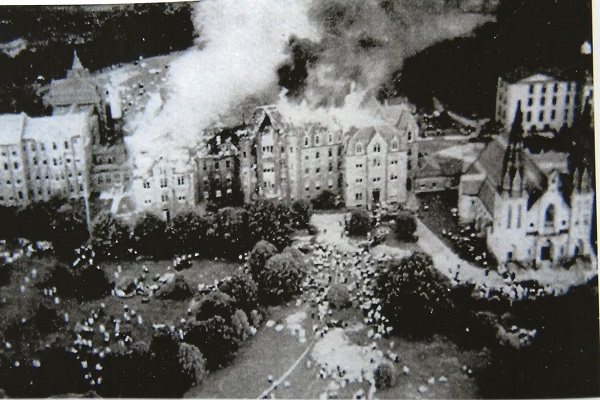
The fire spread quickly; and within an hour, twenty-five fire companies had been called to the scene to assist, not so much as to save the building but to save the university. At 6:20 that evening, George Clay Fire Company was one of the 25 companies called upon to lend assistance at the university blaze. (Another newspaper account reported 15 fire companies on the scene) Clay struggled to get to the fire scene as another light coat of snow had covered the roadways. (We should keep in mind that these were 1928 roadways) The drivers of the fire trucks didn’t need directions to the fire, flames and smoke shot high into the dark cloud-filled evening sky, and the red glow from the flames could be seen from more than 15 miles away.
Nearly a half-hour after Clay was summoned to the fire, the Washington Fire Company of Conshohocken was called in. Neither Clay nor Washies knew the major roll they would play at Villanova University on the freezing-cold terrifying night when their alarm sounded. But these two fire companies would stand out above all others.
When the alarm sounded at the Washington Fire Company, Jesse Stemple climbed behind the wheel of the 1250 Pumper while several of the Washies fire-fighters took their positions on the back of the truck. A portion of the article from the Conshohocken Recorder the day after the fire picks it up from here:
“The 1250 Pump, with Jesse Stemple at the wheel and a full complement of firemen on the truck, started on a perilous journey through snow filled roads for the scene of the fire. The firemen selected the route by way of Spring Mill Road, believing this artery to be opened up, but instead they were obliged to plough their way through great drifts in many places. The powerful engine was kept running at full speed and the firemen were making wonderful headway until they struck an obstacle, which almost upset the truck. (The snow covered roads made for a lot of guess-work as to where the road curved and where it continued straight as the few houses on Spring Mill Road sat way back off the street and the snow covering kept Stemple guessing where the roadway was under the truck) The steering wheel was jerked out of the hand of Stemple for an instant but he quickly recovered his grip and kept the heavy truck on the road.
The impact however, tossed two of the firemen, Albert Shore and Charley Hardy clear of the machine into the snow. Both were badly jolted, although neither badly injured. The nozzles and small extinguishers were also thrown from the truck and it was necessary to stop the machine to wait for the firemen to find and pick up the scattered parts. A chain was also lost from one of the rear wheels and the journey from this point to the fire was very slow. When the truck pulled into the drive of the campus just off Route 30, it became stuck only a short distance from a plug. (Fire Hydrant) and in a few minutes a line of hose 1000 feet in length was laid and the pump set in operation and continued to pump water onto the burning structure for more than three hours.”
As fire companies from throughout the Philadelphia area reached the scene, they found total chaos surrounding the university. Four Bryn Mawr firefighters were battling the blaze on the third floor when the roof spontaneously exploded into flames. The four fire fighters were momentarily trapped but made their way to the window and started to slide down an emergency fire line with timbers crackling, buckling and showering them with flaming embers. The first three men made it to the ground safely, but John Barker, the last of the four men on the emergency rope, fell the final ten feet to the ground when the fire ate through the emergency rope. Barker was later treated at Misericordia Hospital, suffering from shock, rope burns of the hands, and exposure. (Very few firefighters wore any kind of gloves back then).
The most seriously injured firefighter was from the Washington Fire Company. Johnny Rigg, Assistant Chief of the department and well-known trap shooter, fell through a skylight and dropped a distance of twenty feet hitting cement. Other Washies firefighters rushed to his aid to save him, he was later taken to Bryn Mawr Hospital where it took seven stiches to close his head and X-rays proved negative for a broken back. Back in 1928, most firemen didn’t wear gloves, few of them were supplied with jackets or boots and not everyone wore a firefighter’s helmet. The freezing conditions the night of the fire where water was freezing into ice as it left the nozzles created a terrible situation for the firemen. Winds reported at 25 miles per hour combined with the sub-freezing temperatures made for the worst conditions possible. According to an article from the Philadelphia Inquirer many of the firemen had their hands frozen to the nozzles as they worked to put the fire out. Samuel Dewees and John McCord, both longtime members of the Washington Fire Company, had their hands frozen to the nozzles and had to seek medical attention at the scene.
Three Ardmore firefighters became trapped on the fifth floor of the burning building and they had nowhere to go but down. They found that the fire had encroached on all sides of them and cut off the stairway. They had taken in a lot of smoke and were semi-conscious from smoke suffocation before they were able to attract the attention of fellow firefighters nearly 100 feet below them. (Firefighters didn’t have air packs back then, they just sucked in the smoke and headed for fresh air) (Remember it was night time, and heavy black smoke blanketed the area, so the firefighters calling out from 100 feet in the air were unseen by other firefighters on the ground). Remaining members of the Ardmore Fire Company spread a life net and called to their comrades to jump one by one. Each man jumped the nearly 100 feet into a life net, collapsing completely as they were removed from the net and each man was revived at the scene.” It was reported in one of the reports that by the time the first two fire companies arrived a part of College Hall was a roaring furnace, within five minutes of their arrival the fifth floor crashed down through the well of the building into the first floor even as Radnor firemen were going up the steps of College Hall to lay a hose line, several of the men were injured but none lost their lives.
I said earlier that the George Clay Fire Company and the Washington Fire Company would each play a prominent role during the course of this disaster. Well, John “Chick” McCarter, a 60-year firefighter for the Washington Fire Company and a 28 year old firefighter at the scene, gave his first-hand account of the fire. Chick’s father Thomas who was also a 60 year firefighter with Washies arrived later at the scene. Chick told me that when the Washies arrived at the scene, they plugged into the same fire hydrant as Clay. He noted that the George Clay Fire Company was one of the first companies on the scene. The Washies were instructed to roll their hose alongside the other companies and take the flames straight-on.
McCarter noted that Stemple was an experienced firefighter and recognized that the fire was working its way east towards St. Thomas Church, adjacent to the burning building. Stemple advised his men to ignore the orders given and take to the back side of the fire. The Washington firefighters began pouring valuable water onto the unburned portion of the building in an effort to save the church. The fire spread much further than expected, and when the flames started licking the far end of the building near the church the Washies hoses prevented the flames from progressing any further. While it was never written, I have no reason to not believe Chick. He was there.
As for the George Clay Company, well, fate was with Villanova on that fateful night. The following day, damages were estimated at more than two million dollars. But, of course things could have been a lot worse if not for the George Clay Fire Company. It turns out that portions of the building had very valuable paintings, very valuable. William Mulcahy of 401 Ford Street in West Conshohocken, (His house at 401 Ford Street was demolished some years ago) was a member of the Clay Fire Company and also a former Villanova student and resident of the building. As a result, he knew where the valuable paintings were located. So, you guessed it, time and time again throughout the night Mulcahy led Clay firemen into the smoke-filled building to retrieve most of the paintings. The paintings were valued at thousands of dollars each (Just a reminder, this was 1928, thousands of dollars). Taking part in the painting rescue operation also with Mulcahy was Chief Herman Adams, John Kenney, Pat Campbell, Joseph Garnett, Robert White, and John Smith.
At the peak of the fire, crowds were estimated at more than 10,000 people at the scene. Keep in mind that Villanova had less than a thousand students back then. With twenty-five fire companies on the scene, Lincoln Highway, now Lancaster Pike, had traffic backed up for miles. The next day, a Philadelphia newspaper pointed out that the George Clay Fire Company of West Conshohocken and the Washington Fire Company of Conshohocken had worked valiantly together and remained on the scene until all danger had passed. The paper also noted that many firemen suffered from severe frostbite of the hands and feet, as the firemen’s hoses and caused ice several feet thick in places.
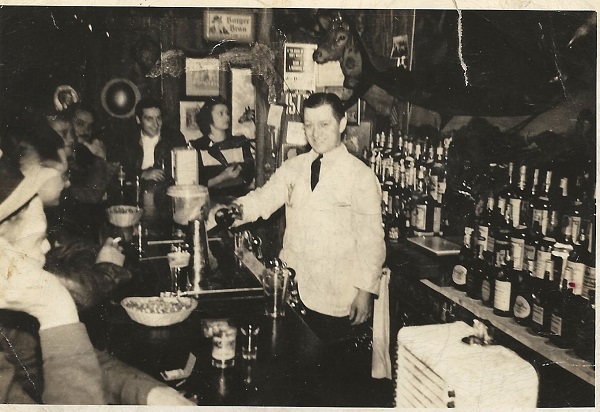
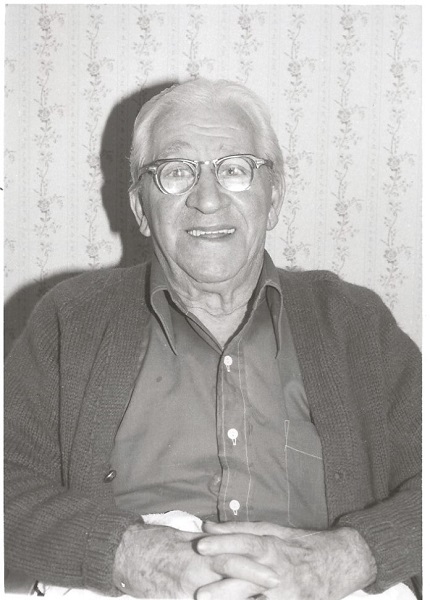
Over the course of nearly 150 years of firefighting services in Conshohocken and West Conshohocken there unfortunately have been too many memorable Fires. A couple of major fires that come to mind include:
On April 25, 1903, West Conshohocken Police Officer James McShane discovered a fire at the public school while making his rounds. McShane and a number of firefighters pulled the hose carriage to the scene of the fire. The Washington Fire Company assisted, and more than three hours later the fire was under control. Because of extensive damage at the school, the school board approved the use of the firehouse as a temporary school until the public school was up and running again.
In 1927, both the Washington Fire Company and the George Clay Fire Company responded to a major fire at the Talone Building at 110 Fayette Street. The fire companies that included both McCarter’s pumped water on the fire for more than seven hours.
In 1938, a fire broke out at the corner of Ash and Hector Streets in Conshohocken. The fire destroyed the Campbell Furniture Store, five garages and six homes. If not for the quick work of Washies, Number 2, and a number of other companies that included George Clay, Plymouth, Spring Mill and Harmanville, dozens of homes along Hector Street might have gone up in flames.
On January 30, 1938, a major fire broke out at the St. Joseph’s Home for the aged, once located on Balligomingo Road at the former Bullock House. The 100-year-old, 28 room grey stone structure at one time was St. Mary’s Orphanage. Since 1936, it had served as a home to the elderly. George Clay Fire Company Chief Herman Adams called it the worst fire in West Conshohocken and perhaps the worst non-industrial fire in the borough’s history. Johnny Rigg, Assistant Fire Chief of the Washington Fire Company was injured at the scene when he was overcome by smoke and needed medical attention.
In 1923 Conshohocken’s fire companies along with George Clay and Plymouth companies were called to an early morning fire at the Harry Street School located on West Third Avenue and Harry Street. The loss was estimated at more than $60,000, and the nearly 700 grade school pupils were excused for the remainder of the school year.
In January of 1927, we had the Woolworth’s fire at First Avenue and Fayette Street. Thanks to the usual Fire Companies that included both Conshohocken companies, Plymouth and George Clay, lives were saved, as was the entire 100 block of Fayette Street. The Woolworth’s Store was gutted by fire leaving more than $50,000 in damage. The firemen were able to evacuate all four apartment units over the store and get all the residents out safely in their night clothes.
There was the unforgettable Front Street, West Conshohocken fire on January 27, 1971, a fire burned into the minds of anyone who ever lived or worked in either borough. Thirty-five residents were taken to area hospitals, five residents were killed and fifteen homes were destroyed.
In August of 1993 a fire broke out at the Elm Automotive Garage at the intersection of West Elm Street and Colwell Lane, the garage was fully involved and the firemen were successful in evacuating all of the apartments above the garage. Carter Daywalt, a volunteer fire fighter for 37 years and a member of the Conshohocken Fire Company No. 2, was injured during the fire.
There was the Lit Brothers fire at the Plymouth Meeting Mall in January 1970, a vicious fire at Lee Tire and Rubber Company in January 1960, a major blaze at the Garment Factory in November 1975 and let’s not forget the Washington Street Fire in 2008.
There were other major fires throughout the years including St. Mary’s Rectory in 1943, C & D Batteries in 1944 and again in 1953. The Tornetta Freight Company fire in 1970 was a major fire that involved a dozen fire companies. In 1978 The Plymouth Garden Apartments fire was a handful and in 1974 the Downtown Tavern was considered a major blaze and many, many more.
John “Chick” McCarter was a member of the Washington Fire Company for 67 years, his father Thomas was a firefighter for 62 years. Chick was the Grand Marshall when the Washington Fire Company held their dedication of the new firehouse in 1985. He was he co-founder of the Conshohocken Sports Hall of Fame in in 1986 was himself inducted into the Conshohocken Sorts Hall of Fame. Chick was also inducted onto the Summit Chapter of the Pennsylvania Sports Hall of Fame in 1984.
Chick was a member of the “Washies Sirens” a musical group from the 1920’s and 1930’s. Chick was an excellent singer and was known throughout the area for his voice. He worked for many years at Walker Brothers in Conshohocken and was a bar tender at a number of Main Line bars.
One more thing about Chick, in 1914 Bob “Hooker” Crawford established a professional Football Team. Crawford’s football teams were legendary back in the early part of last century. In the summer of 1914 Crawford and the Conshohocken Pros needed a respectable football field to play their games on. Crawford rounded-up a group of volunteers to clear the weed and shrubs from an open field at Eleventh Avenue and Harry Street.
Fourteen year old Chick McCarter was one of the first residents to volunteer. He recounted the story of how he worked for several days clearing what would become the “A” Field as we know it today. Since 1914 many legendary games of football have been played at that location, not to mention baseball, Donkey Baseball, Rugby, softball, Boxing matches, professional wrestling matches, celebrity Softball Games, CYO, and High School games and on and on. It all started with a group of resident clearing that field by hand and Chick McCarter was one of them.
I had the pleasure of knowing a great many Conshohocken residents over the years, it was Chick who sparked my interest in Conshohocken sports and I thank the good Lord he gave me time with Chick, of all the wonderful residents I’ve dealt with, Chick is at the top of my list.
For more on John “Chick” McCarter be sure to read the article on Conshystuff.com titled “Washies Sirens.”
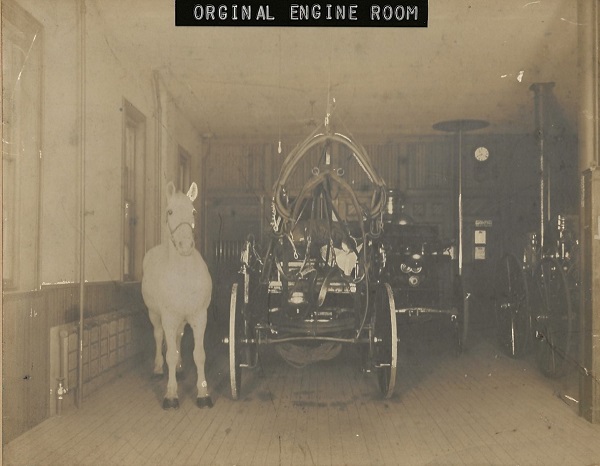

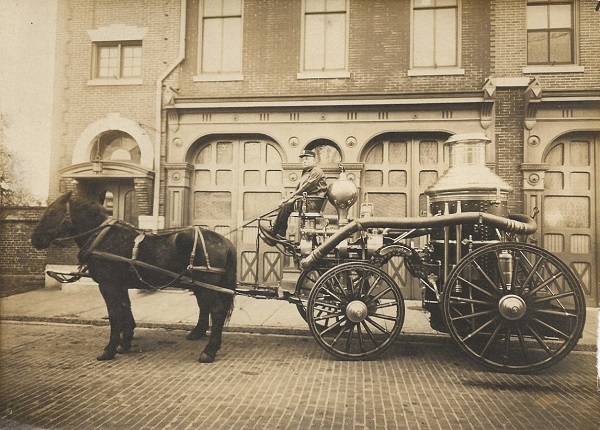
PHOTOGRAPHS ABOVE INCLUDE
338 East Eighth Avenue, former home of John “Chick” McCarter
Members of the Washington Fire Company Circa 1900 include Thomas McCarter, sitting third from left. Other identified members include seated from left include Dunlap, Bailey, McCarter, unknown, Stemple, Shaw and Mason. In the second row to the far right was Stott. In the third row from left included second from left Jones, Third from left was Garnett. The photo was taken in the basement of the firehouse before what looks to be before a parade. I’m sure a number of the firefighters in the photo were also part of the team that fought the 1898 brewery fire.
Two photographs of what remains of the old Gulph Brewing Company on Balligomingo Road, now a private residence.
What was the Crystal Spring Brewery Company at the turn of last century located at Hector and Jones Street, today have been converted in modern day condos.
Two photographs taken on January 30, 1929 at Villanova University following the fire.
John “Chick” McCarter when he worked as a bartender at the Gladwyne Inn back in the 1930’s, later the Old Guard House.
A photo I snapped of Chick in 1985.
What looks to be the official Housing of the Washies new horse pulled water pumping unit.
A look at the Washington Fire Company’s original Engine Room in the 1890’s, along with two other photographs of the horse pulled water and hose wagons

